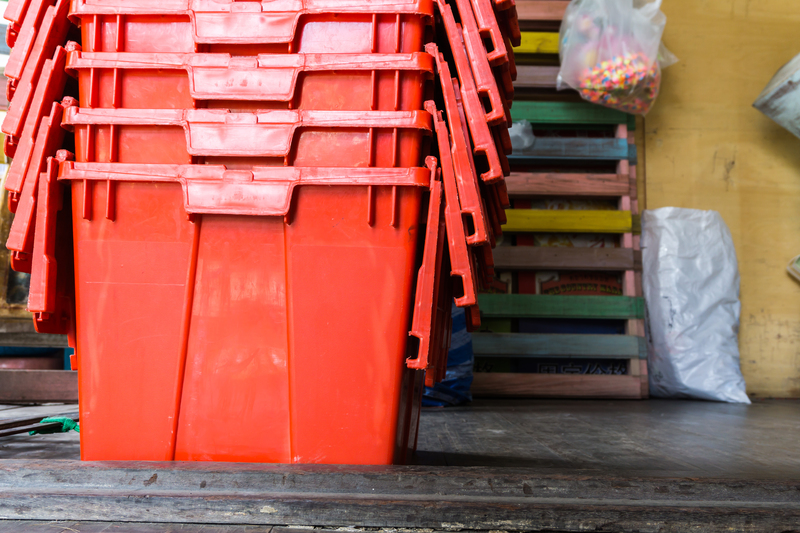Unlock Sofa Longevity with Expert Storage Techniques
Posted on 17/05/2025
Unlock Sofa Longevity with Expert Storage Techniques
Investing in a high-quality sofa is just the first step in enjoying stylish, comfortable seating for years to come. But did you know the secret to maintaining its pristine condition lies in how you store it? Whether relocating, downsizing, or safeguarding seasonal furniture, mastering expert sofa storage techniques can dramatically extend your sofa's life span, preserving both its appearance and functionality.

Why Proper Sofa Storage Techniques Matter
Sofas are more than just a place to relax--they're significant investments in your living space. Applying best practices for sofa storage shields your furniture from premature wear, environmental damage, and unnecessary expense. Inadequate storage often leads to issues like mold growth, fabric fading, structural deformities, and pest infestations.
- Retain Aesthetic Appeal: Proper storage prevents stains, creases, and sun damage to fabrics and leathers.
- Protect Structural Integrity: Well-stored sofas maintain their frame shape, avoiding warping or breakages.
- Save Money: Extending your sofa's longevity postpones the need for expensive repairs or replacements.
- Preserve Value: If you plan to sell your sofa in the future, careful storage keeps it looking 'like new' for prospective buyers.
Preparation: The First Step to Sofa Storage Success
Before you move your sofa into storage, take these crucial preparatory steps to ensure optimal condition throughout its stay:
1. Clean Thoroughly
- Fabric Sofas: Vacuum every crevice to remove dust, dirt, and crumbs. Treat visible stains with an appropriate upholstery cleaner, letting the fabric dry completely to prevent mold.
- Leather Sofas: Wipe with a damp microfiber cloth. Condition the leather with specialized products to avoid drying or cracking over time.
- Wooden Elements: Dust all wood parts and polish with a suitable solution to shield against moisture and pests.
2. Disassemble If Possible
- Remove sofa legs and cushions. Wrap smaller components separately to save space and prevent loss or breakage.
- Secure all screws and fasteners in labeled bags taped to their respective parts.
3. Wrap with Care
- Plastic wrap: Avoid direct contact with fabric or leather, as it can trap moisture. Instead, use moving blankets or breathable furniture covers, then add a loose outer layer of plastic if necessary.
- Tape: Never apply directly to sofa surfaces. Use strong packing tape to secure covers only.
Choosing the Perfect Storage Environment
The longevity of your sofa in storage heavily depends on environmental factors. Picking the right spot is just as critical as how you pack it.
- Climate-Controlled Storage Units: Temperature and humidity fluctuations can seriously damage your furniture. Opt for climate-controlled facilities to prevent mold, mildew, and structural warping.
- Clean, Dry, and Pest-Free: Ensure the unit is cleaned regularly, has no signs of pest infestation, and is protected from flooding or leaks.
- Adequate Space: Overcrowding can lead to crushing or accidental damage. Allow room around each piece for air circulation.
Where Not to Store Your Sofa
- Garage or attic environments often lack proper insulation, leading to temperature extremes and dampness.
- Outdoor sheds or basements are susceptible to pests, flooding, and excessive humidity.
Unbeatable Techniques to Maximize Sofa Longevity in Storage
Maintain Ventilation
- Avoid wrapping your sofa too tightly in plastic. Always allow air to circulate to prevent condensation and potential mold formation.
- If feasible, position the sofa slightly off the ground using wooden pallets. This protects against potential moisture creeping up from the floor.
Position with Purpose
- Place your sofa on its legs or frame, not on its side or back, to avoid warping and deformation.
- Avoid stacking heavy boxes or items on top of the sofa to preserve cushion shape and frame integrity.
Regular Monitoring
- Visit your storage unit regularly to check for signs of moisture, mold, or pest activity.
- Reapply protective treatments (like leather conditioner or wood polish) every few months if storing long-term.
Protect Against Pests
- Seal all entry points in your storage unit.
- Place natural pest deterrents like lavender sachets or cedar blocks near the sofa.
- Avoid storing food or scented items nearby.
Optimized Storage for Different Sofa Types
Fabric Sofas
- Use breathable covers--such as cotton or canvas sheets--to shield from dust and indirect sunlight.
- Elevate if possible to prevent moisture absorption from the floor.
Leather Sofas
- Condition the leather before wrapping to prevent cracking.
- Cover loosely with a soft cloth and never with plastic.
- Place out of direct sunlight, as UV rays can discolor leather over time.
Sectionals and Recliners
- Disassemble into smaller pieces if possible.
- Store components side by side, not stacked, to prevent deformation.
- Keep recliners partially open--never locked shut--as this relieves pressure on the mechanism.
Don'ts of Sofa Storage: Common Mistakes to Avoid
- Don't skip cleaning: Storing an unclean sofa leads to set-in stains and lingering odors.
- Don't use non-breathable covers directly: Plastic alone traps moisture, promoting mold and mildew growth.
- Don't squish or over-stack: Overloading your unit causes frame damage, sagging, and permanent fabric impressions.
- Don't ignore regular inspections: Small issues like leaks or pests can worsen rapidly if unchecked.
- Don't forget insurance: Valuable sofas may not be covered by standard insurance; check with your provider for extra protection during storage.
Expert Tips for Moving Sofas into Storage
- Teamwork is Vital: Always enlist help when lifting and moving heavy sofas to prevent injuries and accidental drops.
- Use Furniture Dollies: Protect both your back and the sofa's legs by rolling it into storage, rather than dragging it.
- Protect Door Frames: Use corner protectors or soft padding to avoid scuffs or scrapes when navigating tight corridors.
- Track Disassembled Parts: Keep all hardware and removable elements in labeled bags attached to the sofa or included in your moving inventory.
- Photograph for Reference: Take pictures during disassembly so reassembly is a breeze when it's time to use the sofa again.
Post-Storage: Reviving Your Sofa after Time in Storage
Once it's time to bring your sofa out of storage, reverse your storage steps carefully:
- Unwrap Slowly: Allow your sofa to acclimatize to indoor temperature before removing protective coverings. This prevents condensation or material shock.
- Inspect for Issues: Look for new stains, moisture, or pests. Treat anything you find before bringing the sofa inside.
- Vacuum and Clean: Freshen up the sofa to remove dust or possible odors collected during storage.
- Recondition Materials: Apply polish, conditioners, or fabric treatments as needed.
- Reassemble: Use earlier photographs to ensure solid, correct assembly.
Frequently Asked Questions about Sofa Storage Longevity
How long can I safely store my sofa?
With expert storage methods--climate control, cleaning, and correct covering--most sofas can remain in storage for several years with little deterioration. However, it's strongly advised to check and maintain your sofa periodically, especially for longer periods.
Will storing my sofa affect its warranty or value?
While most manufacturers' warranties do not cover storage-related damage, properly storing your sofa (using recommended techniques) helps retain its value and marketability, should you wish to sell it in the future.
Can I store my sofa vertically to save space?
Never store sofas on their ends or sides. This can lead to warping, joint loosening, or frame damage over time. Always store upright on their legs or a pallet.

Conclusion: Prolong Your Sofa's Life with Professional Storage Practices
Unlocking the full longevity of your sofa hinges on much more than purchase price or daily care--it requires a strategic approach to storage. By investing time and attention into expert storage techniques for your sofa, you protect your furniture from a host of avoidable damages while maximizing both comfort and value for years to come.
- Prep, Clean, and Condition: Start right with thorough cleaning and treatment.
- Wrap and Position Carefully: Choose correct covers and store upright in a controlled environment.
- Stay Proactive: Regularly inspect and maintain your stored sofa to preserve its condition.
Make smart use of expert sofa storage techniques, and your favorite piece of furniture will always have a place--stylish, sturdy, and ready for your relaxation, no matter how long it spends in storage.
